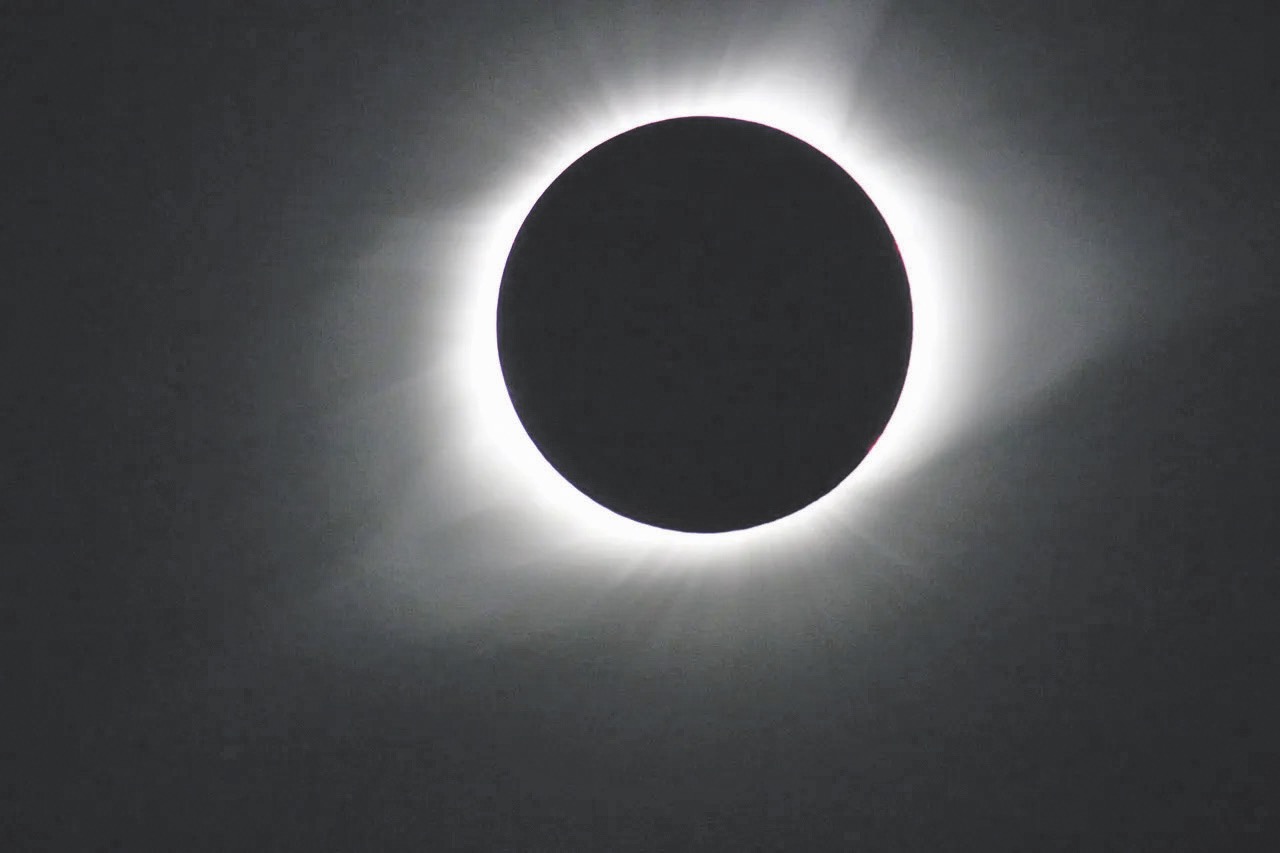Seeing the April 8 eclipse in Idyllwild
The April 8 solar eclipse, known as “The Great North American Eclipse,”
will darken skies across 13 U.S. states, as well as Mexico and Canada,
next Monday. Idyllwild will not be in the path of totality, but locals
will notice, weather permitting, a darkening as the moon obscures about
60% of the Sun’s disk. Those places in totality will experience it for
over four minutes. Do not look directly at an eclipse; safe viewing
requires special glasses, not like what you find in normal sunglasses.
Even smartphone cameras should not be pointed at the Sun without a
special filter.

PHOTO COURTESY OF NASA/NAT GOPALSWAMY
All regular optical devices are out of the question: no binoculars,
telescopes or camera lenses without solar filters. Eclipse glasses are
1000s of times darker than regular sunglasses; their glass is called ISO
12312-2. In welding glasses, that is called shade level 14.
The eclipse also can be viewed indirectly by punching a hole in a piece
of cardboard and letting the sun shine through the hole onto another,
preferably light-colored, piece of cardboard. A colander or other
perforated item will project dozens of tiny eclipses. Again, do not look
through the card or colander; look at the image it casts on something.
Leaves of trees will have a similar effect, casting innumerable images
on the ground and other leaves, so even if you are without any
equipment, you can get a beautiful and safe look.
The Moon will begin to cover the Sun locally just after 10:06 a.m.
Pacific Time. The eclipse will reach maximum at 11:13 a.m., and will end
at 12:24 p.m. You can also watch it online at nasa.gov or on YouTube
starting at 10 a.m. NASA will track it from inside the path of totality
for three hours, streaming with and without commentary, and with views
from the ground, aircraft and the International Space Station.
Spring and fall are eclipse seasons, when the Moon’s path in the sky is
neither north of the Sun as in our winter, or south as in our summer.
Two to five solar eclipses occur every year, with total eclipses
happening about every 18 months. Lunar eclipses are more common because
the Earth’s shadow is bigger than the Moon’s. Some years eclipses can be
seen in both seasons, and 2016 saw a quartet: lunar and solar eclipses
in both seasons, all visible here.
Eclipse lovers will flock to locations within totality for the full
experience; mysanantonio.com reports hundreds of thousands are expected
in Texas. Astronomy Magazine published a list of 20 top spots in Mexico,
the U.S., and Canada. NASA has lots of information about this eclipse
and others at science.nasa.gov/eclipses.
This one also has its own website: Eclipse2024.org. Both sites have
simulators: NASA’s shows a map view of the shadow; Eclipse2024’s shows
what the eclipse will look like from your location.




